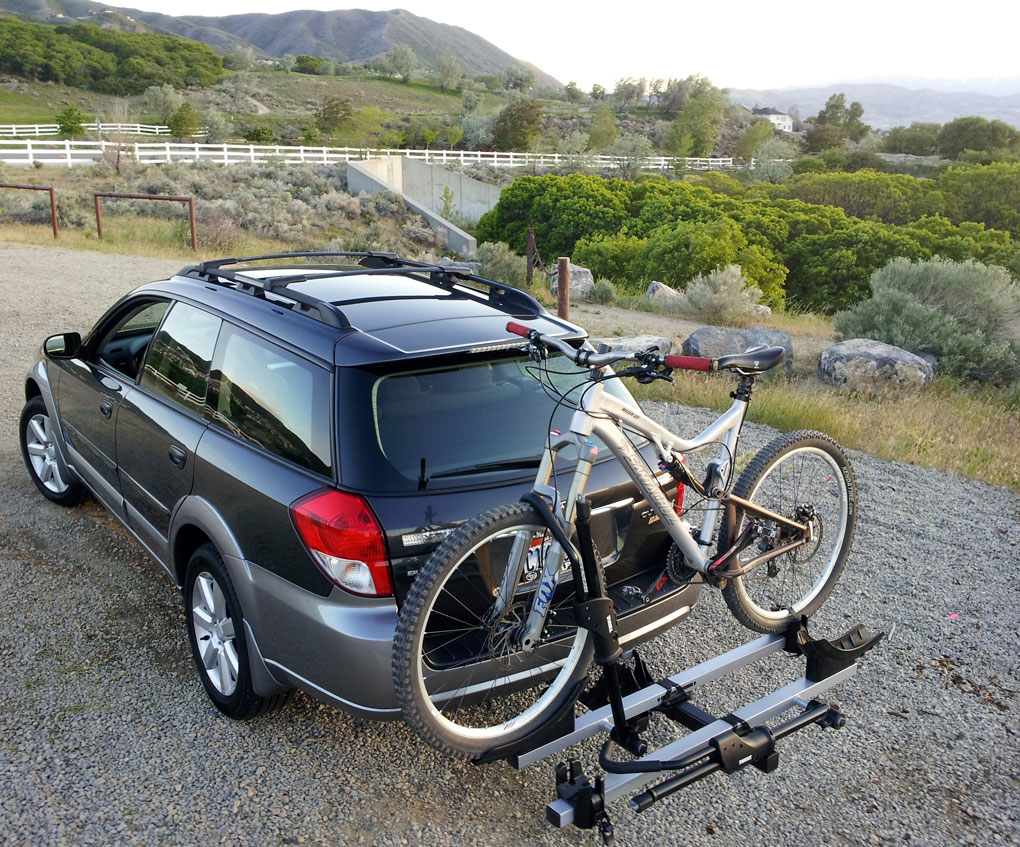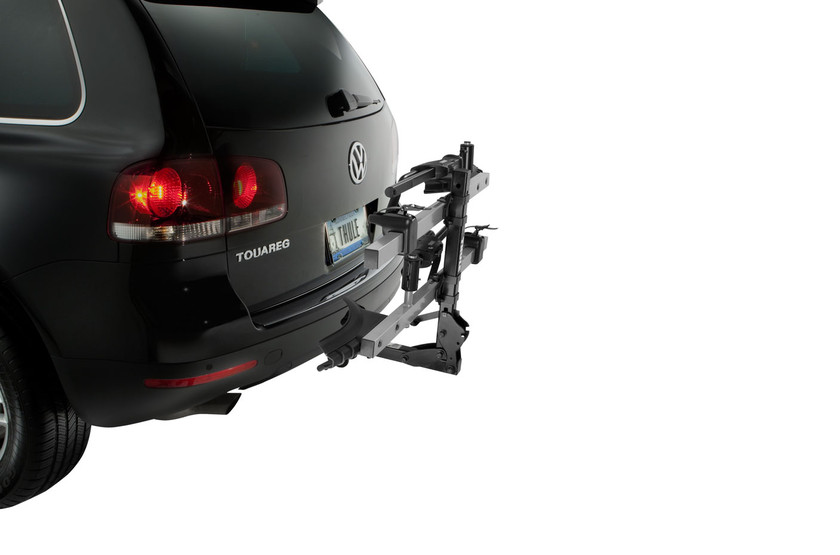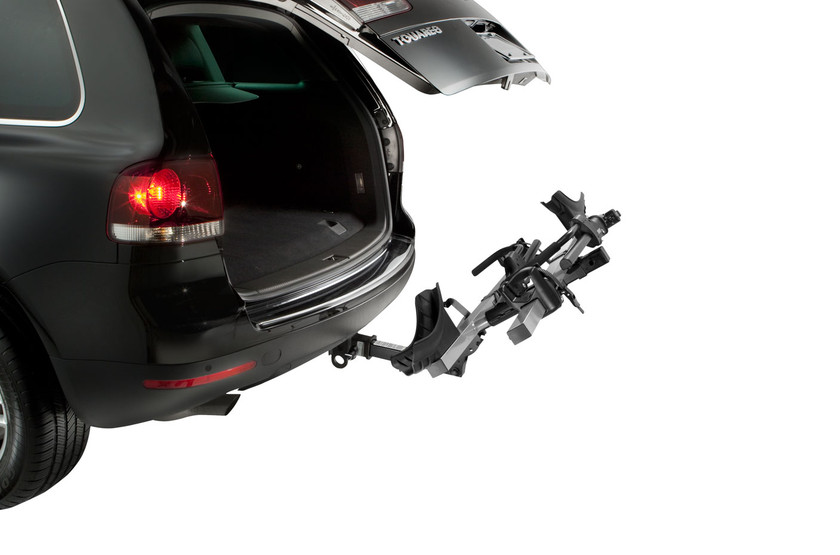Travel
I have been completely impressed with this Thule rack when travelling over pavement or nasty dirt roads. Being a two-bike rack, the bikes fit nicely behind the car, not extending substantially into space in any given direction from the dimensions of my Outback.
This can’t be said for another popular two-bike rack (the North Shore Racks two-bike carrier) that holds the bikes vertically, but is just like any other two-bike tray carrier.
In my experience, when the road gets bumpy, the T2 remains very sturdy when carrying trail- and all-mountain-style bikes. All of the connections are very secure, so the bikes and rack don’t move at all, and there is no noticeable noise to speak of. From experience with the Thule T2 in the four-bike configuration, I can’t say the same is true, as the excessive weight and length seems to inherently develop play over time. I also haven’t used a North Shore Rack that remains so solid, both at the car and to the bikes, as the Thule T2.
Another area of design I’ve found beneficial is the rack height. I haven’t had a single issue with bottoming out the rack, whether pulling into a steep driveway around town or navigating my way to a remote camping area over rocks and ledges in Moab. My Outback does have a generous amount of ground clearance, but it is nice to see that the 917 (1 ¼”) is 1 inch shorter and 1.5 inches higher than the 916 (2”) model in relation to the hitch.
Of course, the downfall of hitch-mounted tray racks is that the more bikes you carry, the farther back the bikes get from the car. If I had opted for a 2” hitch on my Outback (and thus could have gone with the Thule 916, which allows for the addition of two more bike trays), I am certain there would have been multiple bottoming-out incidences. From my experience with multiple racks, if I wanted to carry four bikes on the back of any vehicle, it would be with a North Shore Racks-style carrier.
But for two trail / all-mountain bikes, I couldn’t be happier with how this rack carries the bikes down the road.
Access / Storage Positions
Though not unique to this rack, or even Thule racks in general, the T2 does feature a pivot-and-lock system that allows the trays to rotate from the standard horizontal carrying position to a folded, vertical position for storage without bikes (on or off the vehicle), or dropped ~30° from horizontal to allow trunk / hatch access with bikes loaded.
The process of moving the trays from position to position is quite simple, but can be a little tricky in one of the motions.
With the rack free of bikes, a pull on the locking block arm frees the frame to lift and pivot vertically 90° with a minimal effort, where it locks into its next fixed position.
In this position, the rack pulls cleanly up and out of the way, only extending behind the rear of my car 12 3/8” as opposed to the deployed horizontal rack extending out 31 ½” from the bumper.
In this vertical position, I am not able to raise the rear hatch of my Outback, which is part of the compromise for the rack pulling in so close to the car in the storage position. The nice thing is that from the vertical position, it is easy to lift the lock block arm, swing the rack down 30-40° (avoiding locking the hitch in the horizontal position) to get access to the hatch area, then close the hatch, grab the rack, and pull it back up to the vertical / locked position and go.
This vertical position is also great when the rack is not attached to a car and being stowed. The rack easily balances, sitting up and leaning onto one of the tray arms, allowing for it to be placed, freestanding, anywhere with enough room.
With bikes on the rack (trays in horizontal position), gaining access to the rear of my car is in theory quite easy, but in practice a bit awkward, especially while lowering. To safely lower the bikes out of the way, it is absolutely 100% necessary to support the rear portion of the rack with one hand while unlocking the locking block with the other. This has to be done from the rear of the rack, and I have to duck under both bikes to reach the lever arm and lower the bikes down. At this point I find myself in an awkward position, scrunched up next to / under the bikes. Maybe (and probably) it’s just because I’m 6 feet tall, and it’s really not that bad, but it’s definitely awkward for me. For an alternative perspective, my girlfriend, who is 5’2”, doesn’t find it quite as awkward.
This tray position is incredibly handy, and returning the bikes back up to the normal position is easy, because I don’t have to reach under the bikes with one hand to unlock the rack while lifting with the other hand. That is, I don’t need to be as close (i.e., get under) the bikes.




